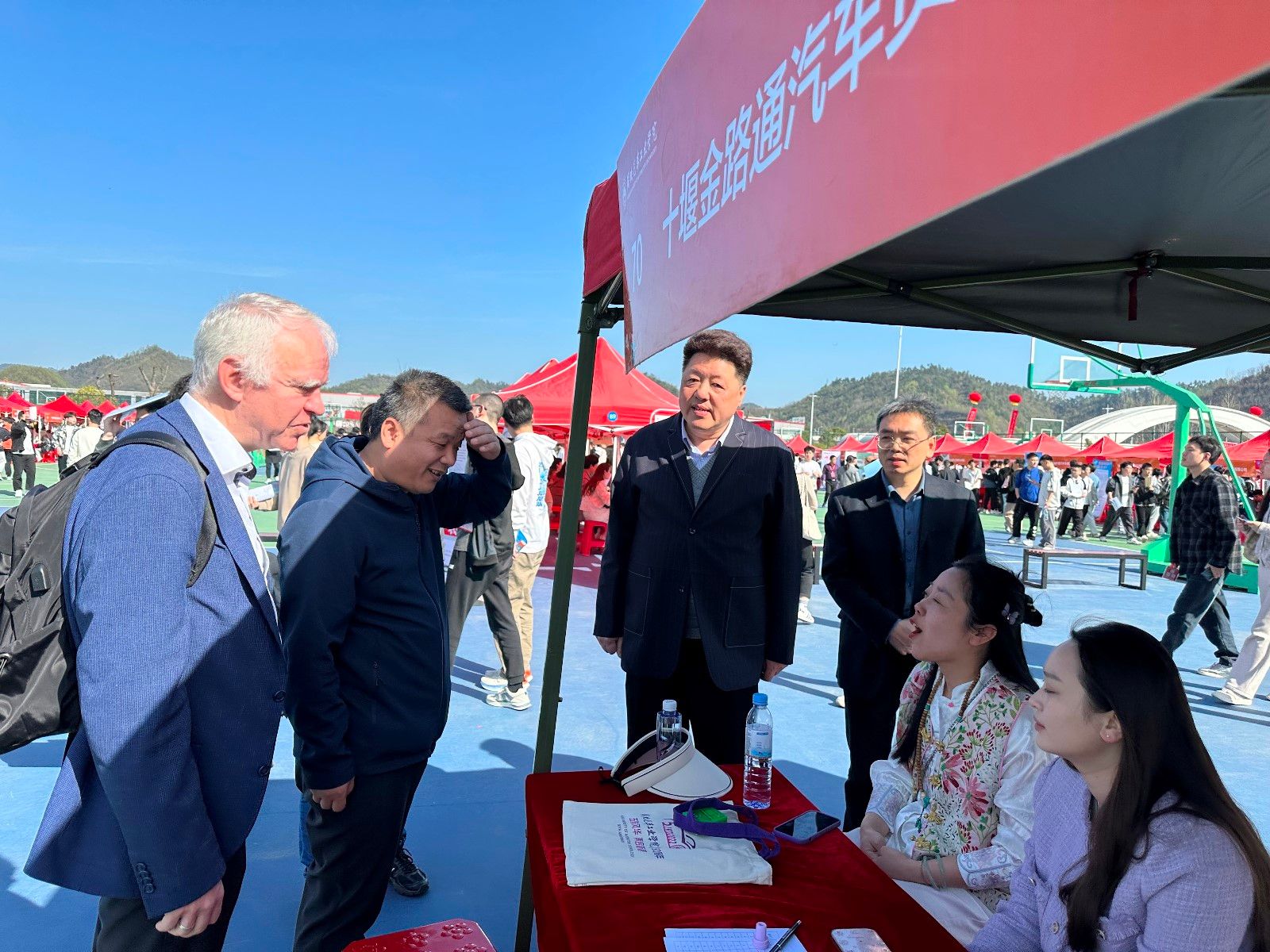On March 29, Georg Stadler, Chief Representative of Gansu Representative Office of Hanns-Seidel Stiftung, Director of Office, Cui Qinghua and translator Ge Shujun visited HUAT for exchange and visit. President Wang Xiao, Academic Affairs Office, School of Continuing Education, International Cooperation and Exchange Office attended the discussion. The meeting was chaired by Zhu Zhanwei, Director of the International Cooperation and Exchange Department.

Wang Xiao warmly welcomed Mr. Stadler and his delegation to visit HUAT. He introduced the basic situation of the university, the cooperation and exchange between the University and German universities, the practice and concept of the integration of industry and education, and the future direction of cooperation, etc. He also thanked the Foundation for its long-term attention and support to HUAT, and hoped that the two sides could strengthen the contact. We will continue to deepen the dual-system vocational education mode, carry out more in-depth and pragmatic cooperation with German universities and enterprises through the Foundation, and strengthen the training of automotive technical talents and the friendly cooperation between China and Germany.

Mr. Stadler affirmed the practical achievements of university-research cooperation in HUAT-German dual vocotional education model. He introduced the development process of combining practical theory in teaching and hoped to strengthen cooperation with HUAT in faculty training, teaching reform and teaching quality management.
Participants from the Academic Affairs Office and the School of Continuing Education also exchanged views in relevant aspects, and the two sides hoped to jointly promote the implementation of the cooperation plan as soon as possible, and establish a university-enterprise cooperation model with HUAT characteristics from the aspects of curriculum, profession and faculty.
Mr. Stadler and his delegation also visited the new campus and the university history museum, and went to the large-scale job fair to learn about students' employment and other conditions, and were deeply impressed by the characteristics of the automobile and the multi-party collaborative education model integrating production, learning and research.